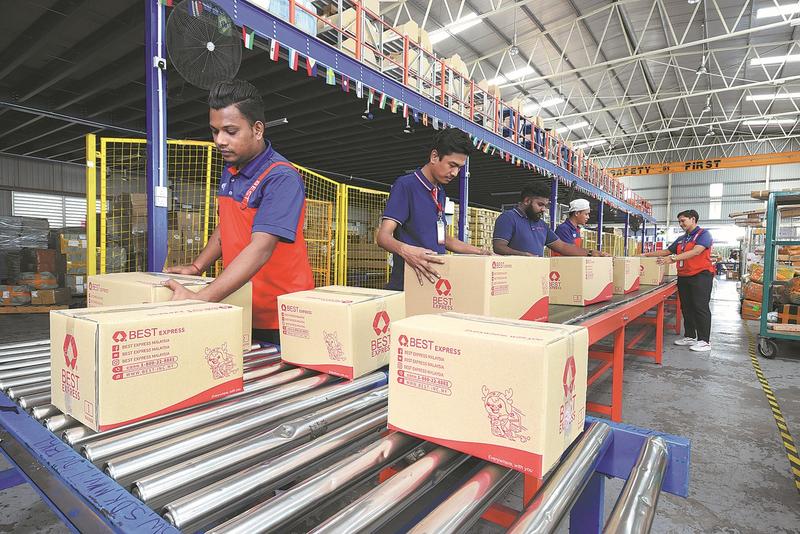 In this undated file photo, workers process packages delivered from China at BEST Inc's sorting center in Kuala Lumpur, Malaysia. The Hangzhou, Zhejiang province-based company has launched a cross-border logistics service to help consumers in Southeast Asian countries to purchase goods from Chinese e-commerce platforms. (PHOTO PROVIDED TO CHINA DAILY)
In this undated file photo, workers process packages delivered from China at BEST Inc's sorting center in Kuala Lumpur, Malaysia. The Hangzhou, Zhejiang province-based company has launched a cross-border logistics service to help consumers in Southeast Asian countries to purchase goods from Chinese e-commerce platforms. (PHOTO PROVIDED TO CHINA DAILY)
China will introduce a guideline to help businesses seize opportunities from the implementation of the Regional Comprehensive Economic Partnership agreement, which will expand trade and investment and facilitate regional growth.
Analysts said the agreement will inject growth impetus into the regional and global economies, and China is expected to play an increasingly important role in both regional and global value chains.
Gao Feng, spokesman of the Ministry of Commerce, said at an online media briefing on Thursday, "The ministry will roll out a guideline for high-quality implementation of the agreement together with other departments, aiming to help enterprises and local governments to make better use of RCEP rules and seize opportunities from markets opening up wider."
Wang Tuo, a researcher at the Chinese Academy of International Trade and Economic Cooperation's Institute of International Trade in Services, said as regional economic and trade cooperation will be strengthened after the implementation of the RCEP, China is expected to enter stronger economic partnerships
Such efforts will propel regional trade and investment growth and strengthen deep integration of industrial and supply chains among the agreement members. This will accelerate high-quality and in-depth regional economic integration, he added.
A recent State Council executive meeting chaired by Premier Li Keqiang called for efforts to support enterprises to increase competitiveness in international markets, improve the quality of trade and investment, and push for industrial upgrades in light of the RCEP coming into force in 2022.
Signed by 15 Asia-Pacific economies, including all 10 member states of the Association of Southeast Asian Nations, China and Japan in November last year, the agreement has created the world's largest free trade bloc that accounts for about one-third of the global population and gross domestic product.
ALSO READ: China, ASEAN set to boost RCEP trade as new chapter begins
It will take effect in 10 member states on Jan 1-Japan, Brunei, Cambodia, Laos, Singapore, Thailand, Vietnam, Australia, China and New Zealand. It will enter into force for the other five members 60 days after official deposition of ratification, acceptance, or approval. South Korea will see it take effect on Feb 1.
Wang Tuo, a researcher at the Chinese Academy of International Trade and Economic Cooperation's Institute of International Trade in Services, said as regional economic and trade cooperation will be strengthened after the implementation of the RCEP, China is expected to enter stronger economic partnerships.
"With the huge potential of its domestic market, China will likely become increasingly important for the healthy operation of regional and global value chains," he said.
The State Council executive meeting urged enterprises to expand exports and imports and leverage RCEP provisions on tariff reductions and the rules of origin.
The RCEP rules allow products to enjoy lower or zero tariffs more easily than many other free trade agreements.
READ MORE: RCEP to drive growth of cross-border e-commerce in China
The meeting also called for better utilization of the RCEP on opening-up commitments and rules, and strengthening regional cooperation on high-end and green industrial chains and manufacturing projects. The agreement should also shore up the opening-up of the services sector and take investment to a higher level.


